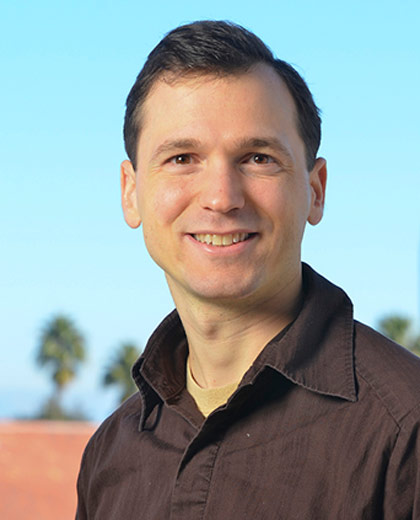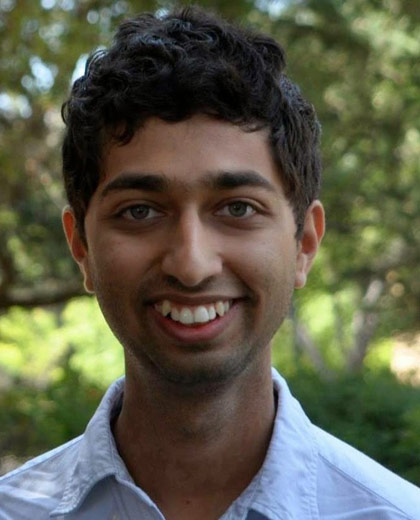Stanford researchers use diverse, global discussion groups to boost online learning experience for participants
New Talkabout video discussions designed by Stanford researchers can connect diverse groups of learners across the globe and improve class performance.

Stanford researchers have found a new way to take advantage of the potential of online learning: create global discussion groups.
In 2011, Stanford University led the movement of universities offering large online courses available worldwide. Today, dozens of institutions offer these massive open online courses, or MOOCs, in topics ranging from psychology to computer science. Enrollment reaches into the thousands.
Now researchers at Stanford University have come up with a way to harness an untapped resource to enhance MOOCs: the global diversity of the participants themselves.
A typical MOOC includes enrollees from every habitable continent, spanning diverse cultures and societies across the globe. That diversity is key to Talkabout, an online video discussion group tool developed by Stanford computer science Professor Michael Bernstein, his graduate student Chinmay Kulkarni, and Scott Klemmer, formerly a Stanford professor of computer science and currently associate professor of computer science and engineering and cognitive science at the University of California, San Diego.

Michael Bernstein (Image credit: Stanford Engineering Communications)
They compared the class performance of enrollees who took part in Talkabout-based discussion groups with their peers across the globe to those who did not. Scores on exams and assignments went up for enrollees who participated in the most diverse Talkabout discussion groups, showing that these small social additions to MOOCs can help participants learn course material.
“I think talking to people from faraway places is the biggest opportunity MOOCs can offer,” said Kulkarni, lead author on a recent paper in Proceedings of the 18th ACM Conference on Computer Supported Cooperative Work & Social Computing that describes the Talkabout video discussion tool and the ways they assessed its effectiveness in several MOOCs.
Kulkarni, Bernstein and their collaborators developed Talkabout as a video-based discussion platform for MOOCs. Though thousands sign up for MOOCs, they limited Talkabout discussion groups to an average of about six leaners per group. Kulkarni partnered with instructors who were willing to incorporate optional discussion groups into their courses. Enrollees who participated in the discussion groups simply chose a time to take part in a discussion group, and then signed on to Talkabout at the appointed hour.
Neither the instructor nor researchers moderated the discussion groups. Participants had a list of questions and guidelines for discussion drawn up by the instructor in conjunction with the researchers.
“We worked with instructors,” Kulkarni said. “We worked with them to create discussion guidelines that effectively target a global audience.”

Chinmay Kulkarni (Image credit: Julia Cambre)
The guidelines encouraged participants to review topics brought up in course lectures, but also to include their unique local perspectives on course material. Based on the amount of time participants stayed in their discussion groups, researchers concluded they were a popular option for MOOCs.
“The classes required a 30-minute discussion,” Bernstein said. “But the average discussion group lasted nearly an hour.”
Talkabout discussion groups also affected class performance. Kulkarni discovered that enrollees who participated in discussion groups did better than their peers on course assignments.
“We saw somewhere around a half letter grade in improvement,” said Bernstein.
Kulkarni also tested whether diversity within the groups influenced participant performance. He programmed the Talkabout online platform to create groups with either low or high diversity, based on how many different regions of the world were represented, such as Latin America or the former Soviet bloc. The most diverse discussion groups on Talkabout saw the highest improvement in enrollee scores.
Other additions to online courses, such as text-based discussion chat rooms or fixed discussion groups, have been less effective in improving enrollee performance. Kulkarni and Bernstein said they are excited to better understand why diversity within discussion groups improved enrollee performance.
“It could be that the contrasts among them deepened their understanding,” Kulkarni said, “or mediation, where you help explain what the instructor said to someone who did not understand.”
Future studies of Talkabout would have to specifically test these theories to learn how these discussion groups improved enrollee course performance.
“I think it’s important to know why something works,” Kulkarni said. “But for diversity, there are probably multiple reasons why it worked here.”
Kulkarni, Bernstein and their colleagues have made Talkabout available for free to MOOC instructors who want to incorporate discussion groups into their courses. But Bernstein cautioned that discussion groups must be carefully integrated into the course and advertised to participants.
“If you want people to participate, you have to treat it like educational technology, not social technology,” he said. “It’s not a magic panacea, but when integrated correctly into a curriculum it can have a positive effect.”
Talkabout-based discussion groups may give MOOC enrollees an effective platform to deepen their own understanding of course material, help one another and learn how their peers half a world away interpret subjects from a different perspective.
“Here we see the power of peers,” Bernstein said.
James Urton is an intern at Stanford News Service.
